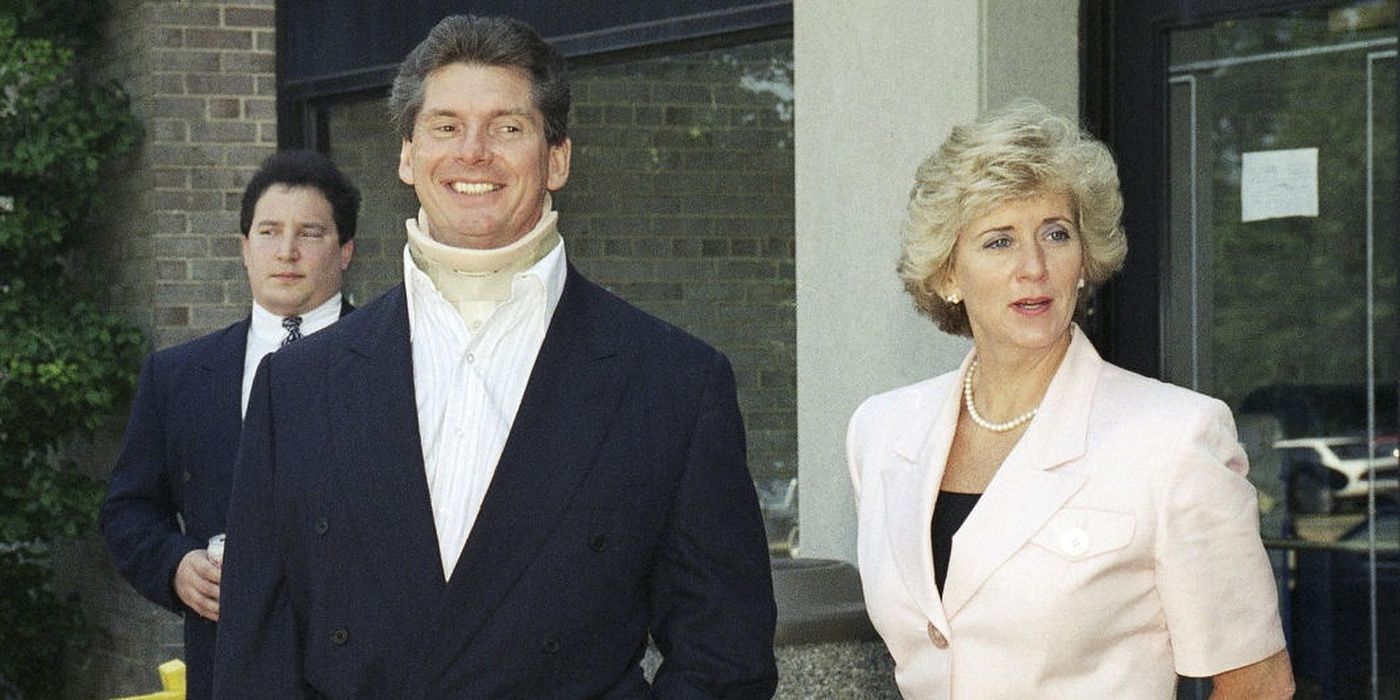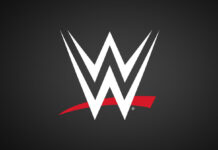
AEW All Out 2022 will forever live in pro wrestling infamy. Not so much for the card itself, but what happened after the show went off the air. As many of us know, a real-life fight between C.M. Punk and The Elite broke out backstage stemming from Punk’s earlier comments at the post-show media scrum.
For weeks, and even months, fans were left to speculate on the gritty details of the backstage brawl. As a result, many wrestling news sites would publish both true and false headlines and narratives in order to capitalize on the evolving story. In a strange twist, fans who long knew that wrestling was “fake” were commenting in droves on something that was very real — and to this day, the full truth about the incident remains unknown.
Whether it’s the “battle” over creative between Vince McMahon and Paul Levesque, or the blurred lines between MJF’s on-screen persona and real-life persona — these often lead to heated discussion over what is or isn’t “real”. In other words, the blurred reality that is kayfabe.
What is “real” was often left to the imagination for most wrestling fans throughout the last few decades. However, what is widely accepted is the fact that kayfabe as we know it has been long dead.
Or is it?
What History Says
Depending on your personal historical timeline, kayfabe in professional wrestling has been dead for anywhere from 30-130 years. The notion that wrestling is “fake” has roots all the way back into the late 1800s. To take an excerpt from an article in the Brooklyn Eagle, printed on Nov. 14, 1877 titled SO CALLED CHAMPIONSHIP CONTESTS:
“There has scarcely been an important contest in which the result has not been known beforehand. A system of humbug has been carried on in the form of creating a supposed bitter rivalry between prominent wrestlers, in order to get up an excitement, and matches have been arranged which have been alleged to be for thousands of dollars a side, when not a dollar has been put up on either side, the contest being one for the gate money alone, and that is equally divided, the betting deciding as to which party should win.”
But many of us aren’t complete nerds that look through old newspaper articles about professional wrestling for fun. For many, the day kayfabe died was when a Feb. 10, 1989 article from the New York Times was published with an affirming truth. In the story titled Now It Can Be Told: Those Pro Wrestlers Are Just Having Fun, “spokesmen” for the World Wrestling Federation testified before the New Jersey State Senate regarding the authenticity of professional wrestling. In an effort to deregulate pro wrestling in the state (which ultimately meant profit for McMahon) an admission was made that wrestling is strictly entertainment, and nothing more than a performance.
The New York Post followed up a day later regarding testimony from Linda McMahon in a lawsuit filed against the WWF and Hulk Hogan by TV host Richard Belzer. Linda states that pro wrestling was:
“an activity in which participants struggle hand-to-hand primarily for the purpose of providing entertainment rather than conducting a bona fide athletic contest.”
In fact, two years earlier, Linda McMahon would testify in front of an ad-hoc committee by Pennsylvania’s House of Representatives involving a sunset hearing regarding the State Athletic Commission and the WWF.
“Unlike professional boxers, professional wrestlers are not competing in contests where points are scored, and the winner determined, by potentially injurious blows struck at an opponent — Instead, like the skilled athletes you see in the circus or the Harlem Globetrotters, our athletes are well-conditioned professionals who are the best at what they do. And what they do is entertain people.”
McMahon later added…
“…I just think there are instances where professional wrestling, not being considered a sport, should not be under this regulation.”
And even two years before that in 1985 Vince McMahon told the Boston Globe:
“I think it was done to death in the ’20s. But I hasten to say that we’re in the sports entertainment field. It’s not important to determine what wrestling is or not. It doesn’t fall into one particular category. It’s not in the category of sport, in the strictest sense of the word.”
Or, if you become a certain age (say 11-13), you likely just get the sense that what you’re watching isn’t entirely real. So that’s right, right? Hell, the McMahon’s themselves failed to protect the business. So how about modern-day viewers?
Internet Wrestling Culture
For at least over two decades now, many online wrestling fans have understood how the business works unlike prior generations. While many would have liked to see “Apter Mags” stick around to protect kayfabe, newsletters like the Wrestling Observer would challenge kayfabe itself; often reporting on happenings backstage beyond the story in the ring.
However, talent didn’t exactly help matters either, as rampant drug use was the norm in the business during the 1980s. One infamous example includes ‘Hacksaw” Jim Duggan getting caught with marijuana while riding with The Iron Sheik (who had cocaine) in 1987. The drugs weren’t the issue, however. It was the fact that a face was publicly seen partying with a heel is what truly angered Vince McMahon at the time.
In 1998 Exposed – Pro Wrestling’s Greatest Secrets hit airwaves, which lead a viewer step-by-step on just how the sausages are made inside the squared circle.
With the advent of social media and smartphones, it’s nearly impossible to protect one’s on-screen character, as well as kayfabe itself. Most casual fans likely don’t care and just assume what they see is a show anyway — and hardcore internet fans have long known that what they see isn’t “real”.
So if kayfabe is long dead, how does wrestling news keep it alive as mentioned in the headline?
How Wrestling News is the New Kayfabe
As we all know, professional wrestling is no less a theatrical performance than what you would see on Broadway. Sure, there are different ways to tell a story in the ring, complete with different styles and athleticism — but at the end of the day, it’s all a stage. Any production crew for WWE and AEW both reflect a similar crew for any television or movie production. Actors play a role on-screen, and so do professional wrestlers (mostly) in the same sense.
However, it is the very nature of the “behind-the-scenes” element of wrestling news that actually protects it. Yes, we all know while the risks in-ring are very real, the outcome is almost always pre-determined. What wrestling news does, for better or worse, is legitimatize the sport in an era where many non-wrestling fans just think of it as “fake”.
This most importantly includes major sports outlets that regularly host AEW and WWE talent on their shows/magazines such as ESPN, Fox and Sports Illustrated.
Wrestling news also takes a smarter viewer and forces them to look beyond what would be commonly accepted as an “average” performance, and ask for more from modern athletes. I don’t just mean dangerous high spots, but the art of suspending the viewer’s belief through emotion and story alone — even if just for a split second.
Pro wrestling news has smartened up an entire generation of wrestling fans to not just respect the craft, but to push it to new heights by having a higher expectation of the product compared to the past. Let’s face it; we’ll never actually know if Paul and Vince are truly beefing over creative. We’ll never truly know if Punk and the Young Bucks were purposely separated during Forbidden Door.
But I would argue there is a great chance that Levesque, McMahon, Khan, and even Punk and The Elite, all laugh at wrestling dirt-sheets 9 times out of 10. I would ultimately argue that there’s a better chance that wrestling fans are getting worked by well-placed news stories and “leaks” more than anything.
As if Khan, McMahon and Levesque are just going to ignore the fanbases and what “dirt” daily wrestling news brings. I would imagine that they know exactly what’s out there; what is truth, and what is pure fiction — more than any internet wrestling fan ever will.
But it keeps us talking, and in some way, it protects the sport by legitimizing it through a 24-hour wrestling news cycle. And that’s okay. We all still love this goofy sport, regardless.
-J.D.
Twitter: @PositivityPlex (I never post, but it’s there…)
What do you think? Share your thoughts, opinions, feedback, and anything else that was raised on Twitter @PWMania and Facebook.com/PWMania.















